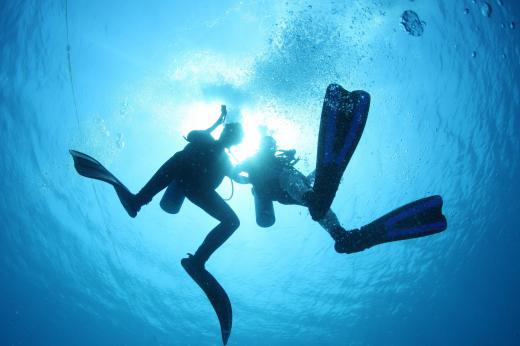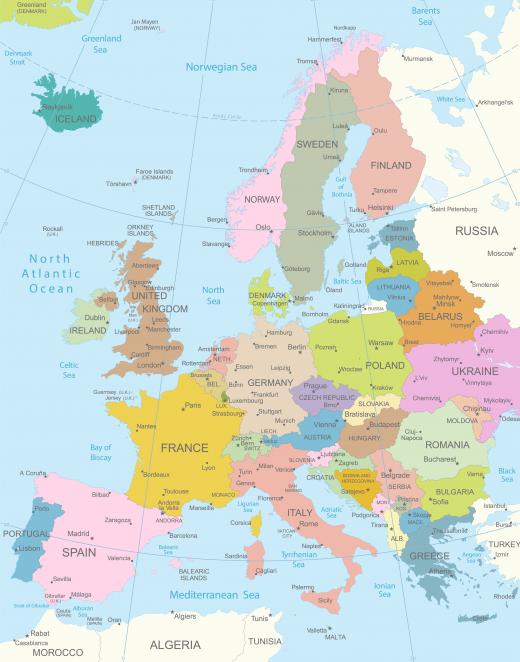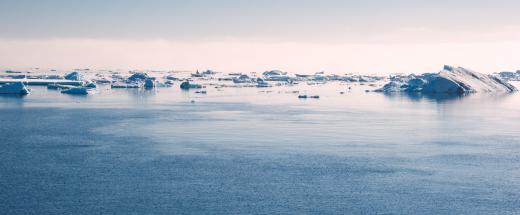What is the Lost Continent?
 Michael Anissimov
Michael Anissimov
A lost continent is a continent, island, or large region that existed a long time ago but only lives today through indirect evidence such as myths or scant archaeological evidence. The world's most famous lost continent, Atlantis, was a fictional example made up by Plato around 360 BC to illustrate his political theories. According to Plato, Atlantis was a naval power lying "in front of the Pillars of Hercules" (Strait of Gibraltar) "9000 years before the time of Solon," or about 9600 BCE. Even though Plato's description of the lost continent Atlanta is was clearly fictional, millions of thinkers over the centuries have subsequently held onto the concept and mistakenly consider it real.
Though Atlantis never existed, the concept of a lost continent is not entirely fictional. During the last Ice Age, which reached its maximum intensity 20,000 years ago and ended 12,000 years ago, more of the world's water was locked in massive continental glaciers, which resulted in sea levels about 100 m (328 ft) lower than today's. This meant that many areas now flooded were once dry, and many of them are known to have been inhabited by humans.

These include Doggerland, which occupied the present-day North Sea; Sundaland, which consisted of many of the islands of Indonesia; the Philippine Islands, which formed one large island; Australia and New Guinea were connected forming Sahulland; and there were large tracts of land between present-day Alaska and Russia, forming Beringia, where humans dwelt for thousands of years as an independent community trapped on all sides by glaciers. Large areas around the fringes of the present-day Black Sea were also above water and inhabited.

Because humans like living near oceans when they can, most human settlements from the period of the last Ice Age are currently underwater, making archaeology of this long period very difficult. Some of the most amazing cave painting sites have been discovered in caves linked to underwater passages. Submerged for 12,000 years, these sites have been kept hidden from human eyes until the invention of SCUBA diving in the 1930s. Many more remain to be discovered. Due to the last Ice Age, much of the submerged fringes of present-day continents are lost lands.

Two of the most grandiose examples of a lost continent are the plateau of Kerguelen, a microcontinent in the southern Indian Ocean nearly three times the size of Japan but submerged 1-2 km (0.6 - 1.2 mi) underwater; and Antarctica, which was once a forest continent. For most of Earth's history, Antarctica was located further north and connected to other continents. About 23 million years ago, it started to freeze over, killing all complex plants and animals on its surface.

The Plateau of Kerguelen was formed as a large igneous province about 130 million years ago, and was a microcontinent connected to Australia and India for millions of years, evidenced by its geologic composition. About 50 million years ago, it probably had tropical flora and fauna, but all of this was destroyed when it sunk underwater 20 million years ago.
AS FEATURED ON:
AS FEATURED ON:














Discussion Comments
This question I cannot figure out, maybe wisegeek can answer this one for me. I would appreciate it. The Jarkov mammoth is claimed to be 20,300 years old.
Woolly mammoths were about 1.5 times the size of modern day elephants, who require about 500 pounds of vegetation each day to survive. If the Jarkov mammoth lived in the area of the Tamir peninsula, which is above the arctic circle, how in the world could a wooly mammoth find enough vegetation to survive, when 20,000 years ago we were engulfed in an ice age at its maximum intensity?
Post your comments